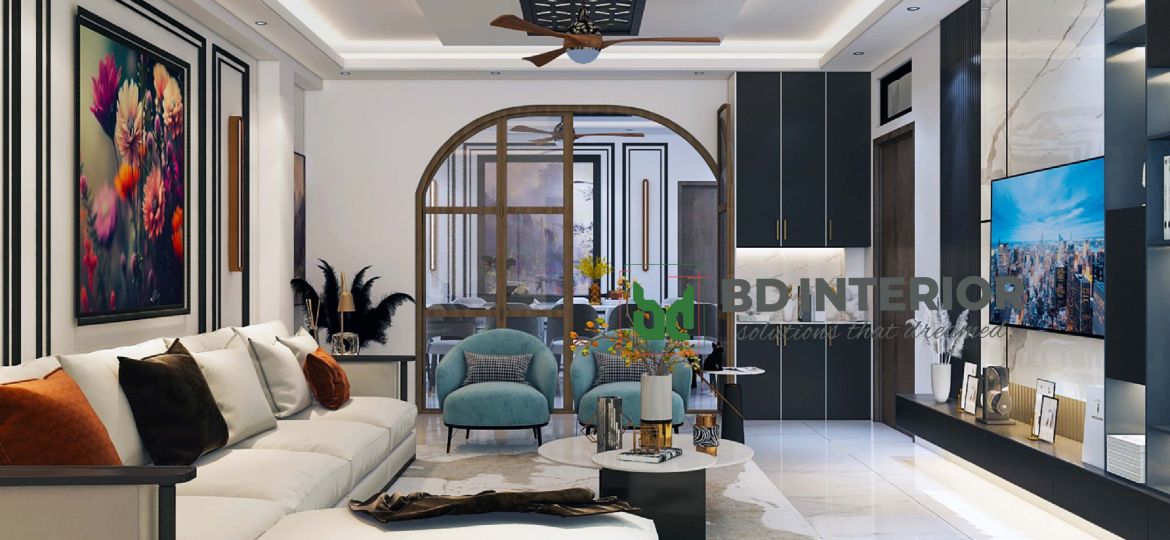
Top 5 Interior Design Mistakes and How to Avoid Them
Interior design can transform a house into a home, creating spaces that are both functional and aesthetically pleasing. However, even the most enthusiastic DIYers and novice designers can make mistakes that can compromise the overall look and feel of a room. In this blog post, we’ll explore the top five interior design mistakes and provide practical tips on how to avoid them, ensuring your spaces are as beautiful and practical as possible.
1. Overlooking the Importance of a Plan
One of the most common mistakes in interior design is jumping into the process without a clear plan. Many people start purchasing furniture and decor items without considering the bigger picture, leading to a disjointed and uncoordinated space.
How to Avoid It:
• Define Your Style: Before buying anything, determine the style you want for your space. Whether it’s modern, rustic, minimalist, or eclectic, having a clear style in mind will guide your choices.
• Create a Mood Board: Collect images, fabrics, and color samples that represent your vision. This will help you see how different elements work together.
• Plan the Layout: Use online tools or simple sketches to plan your room layout. Consider traffic flow, the function of the space, and how you use it daily.

2. Ignoring Scale and Proportion
Scale and proportion are crucial in interior design. Furniture that’s too large or too small can throw off the balance of a room, making it feel cramped or sparse.
How to Avoid It:
• Measure Everything: Measure your room dimensions and the furniture before making a purchase. Ensure the pieces will fit comfortably without overcrowding the space.
• Balance Big and Small Items: Mix large and small items to create a balanced look. For example, pair a large sofa with a smaller coffee table and side chairs.
• Use Rugs to Define Spaces: Rugs can help define different areas in an open-plan space and ensure that furniture pieces are correctly proportioned to each other.

3. Poor Lighting Choices
Lighting is often an afterthought in interior design, but it plays a vital role in setting the mood and functionality of a space. Inadequate lighting can make a room feel dark and uninviting, while overly bright lighting can be harsh and uncomfortable.
How to Avoid It:
• Layer Your Lighting: Incorporate three types of lighting – ambient (general lighting), task (specific area lighting), and accent (highlighting features) – to create a well-lit and inviting space.
• Choose the Right Bulbs: Select bulbs with the appropriate color temperature for each room. Warm lights (2700K-3000K) are ideal for living areas and bedrooms, while cooler lights (3500K-4100K) are better for kitchens and workspaces.
• Dimmer Switches: Install dimmer switches to adjust the light levels according to the time of day and activity, enhancing the room’s versatility.

4. Neglecting Functionality
A room’s design should not only be aesthetically pleasing but also functional. Ignoring the practical needs of a space can lead to frustration and a lack of usability.
How to Avoid It:
• Understand the Room’s Purpose: Clearly define the purpose of the room and choose furniture and decor that support that function. For instance, a living room designed for family gatherings should have comfortable seating and ample space.
• Consider Storage Solutions: Incorporate storage solutions that keep the space organized and clutter-free. Built-in shelving, storage ottomans, and multi-functional furniture can be both stylish and practical.
• Think About Traffic Flow: Arrange furniture to allow easy movement through the space. Avoid placing large pieces in high-traffic areas and ensure there is enough space to navigate comfortably.

5. Disregarding Personal Touches
While it’s essential to follow design principles and trends, a space should also reflect your personality and preferences. Rooms that lack personal touches can feel sterile and impersonal.
How to Avoid It:
• Incorporate Personal Items: Include items that have sentimental value or reflect your interests, such as family photos, travel souvenirs, or handmade crafts.
• Mix Old and New: Blend new furniture and decor with vintage or heirloom pieces to add character and history to your space.
• Customize: Customize elements of your design to suit your taste. This could be as simple as painting a feature wall in your favorite color or as complex as having custom furniture made.
 Final Thoughts
Final Thoughts
Interior design is both an art and a science, requiring a balance between aesthetics and functionality. By avoiding these common mistakes, you can create spaces that are not only beautiful but also practical and uniquely yours. Remember, the key to successful interior design is planning, attention to detail, and a personal touch. With these guidelines in mind, you’ll be well on your way to transforming your home into a haven that reflects your style and meets your needs.